Home › Rothenburg ob der Tauber en › History of Rothenburg
When you visit Rothenburg, you immerse yourself in a world that embodies the essence of German Romanticism. To truly understand this fascinating city, it is essential to know its rich history. Only then does the full magic of the medieval old town unfold before your eyes. Let’s dive in together and explore the history that has made Rothenburg an icon of German Romanticism.
In the year 970, the East Frankish nobleman Reinger laid the foundation for the parish of Detwang in the picturesque Tauber Valley, not far from the future city of Rothenburg. The church of St. Peter and Paul in Detwang later evolved into the mother church of St. Jacobs church.
In 1080, the Counts of Komburg erected an impressive castle complex at the “Essigkrug,” near the present-day hospital. The legacy of this structure passed in 1116 to the monastery of Komburg and the Neumünster Abbey in Würzburg, both founded by them.
In 1142, King Conrad III, the first ruler of the Staufer dynasty, acquired the area where the city would later emerge and had the “Red Castle” built high above the Tauber. It was already referred to as “Castrum Imperiale” (Imperial Castle) in 1167.
Rothenburg ob der Tauber gained prominence through its flourishing trade in wool and its strategically advantageous location on the imperial road from Würzburg to Augsburg. Merchants, pilgrims, and travelers played a significant role in the economic prosperity, and thus, the city thrived between the 13th and 16th centuries, becoming one of the most splendid in the Holy Roman Empire. To this day, historical structures such as St. Jacob’s Church, the Town Hall, and majestic patrician houses bear witness to the former wealth of the city.
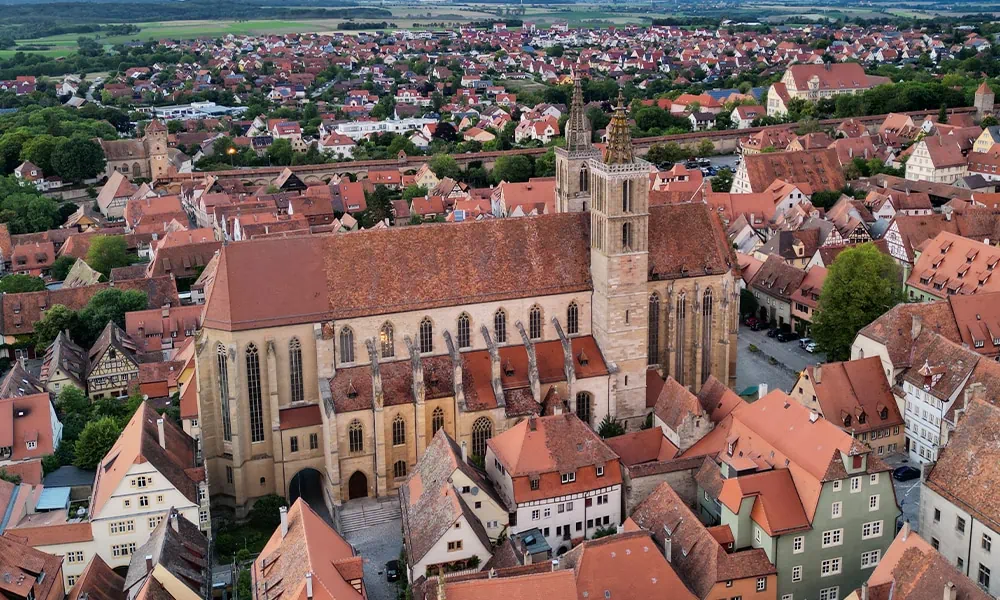
The Middle Ages were by no means a romantic era. Unpaved streets, lack of sewage systems, and tanneries spread unpleasant odors. Rat infestations facilitated the spread of the plague, while famines, wars, and the tyranny of rulers plunged the population into difficult times. The supposedly “good old days” were anything but idyllic.
With growing autonomy, Rothenburg expanded not only in terms of its rights but also spatially. It included suburbs that were integrated into an imposing fortification. Since 1383, the city’s influence extended beyond the walls into the surrounding region, creating a significant urban territory. This territory, known as the “Landwehr,” was protected by a “Landhege” since around 1430.
This expansive period coincided with the rule of the powerful mayor Heinrich Toppler, who, in 1408, fell victim to political intrigues and a rival upper class.
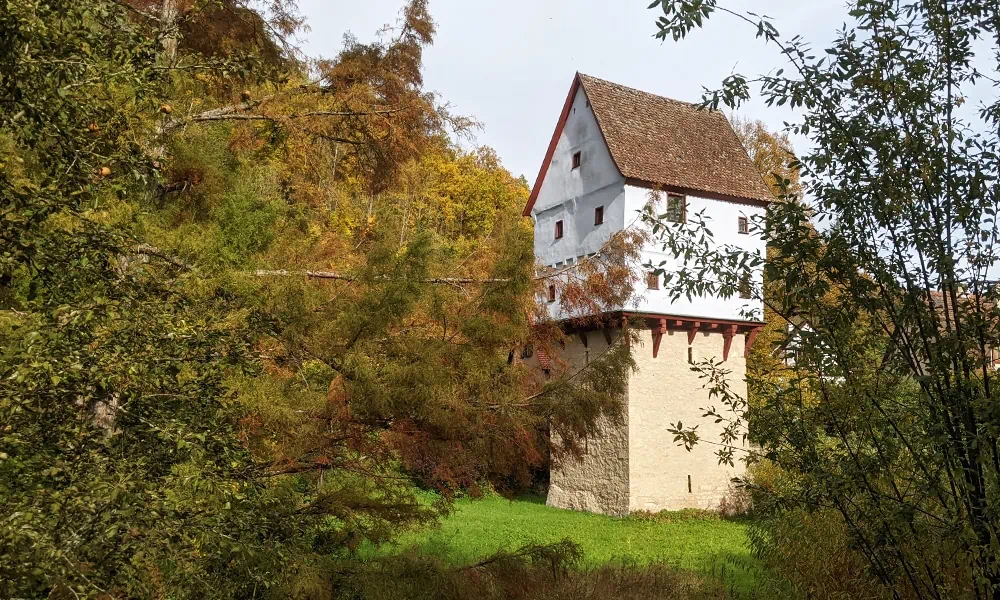
Rothenburg was surrounded by an impressive city wall with six city gates, and its citizens defended their home with crossbows and later firearms. The gates were closed at nightfall, and the ringing of bells signaled the “curfew” to call the citizens back into the city. Those who arrived late had to pass through the “Mannloch” (manhole) and pay a fine. The city successfully withstood many enemies until it was eventually conquered during the Thirty Years’ War.
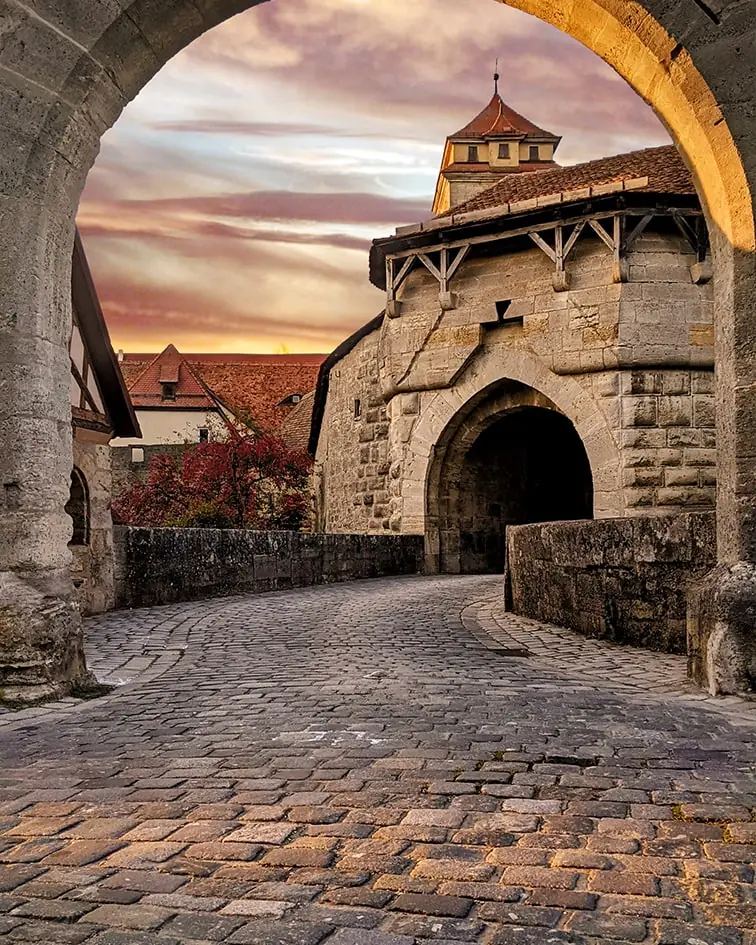
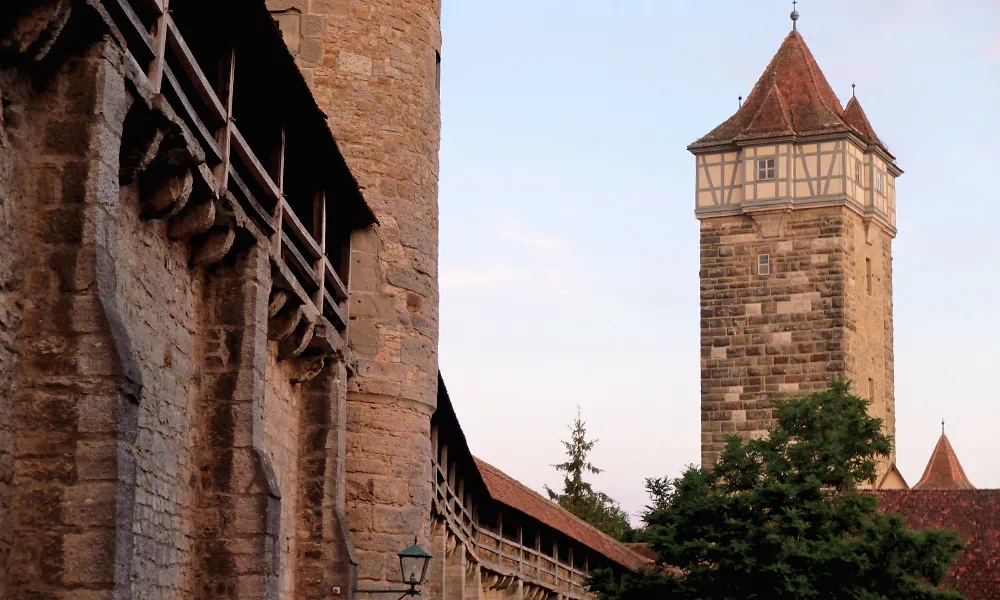
In the 16th century, Rothenburg ob der Tauber experienced the Reformation, leading the city to become a center of Protestantism. In the subsequent 17th century, Rothenburg endured the terrible events of the Thirty Years’ War. Particularly noteworthy is the siege of Rothenburg in 1631, which brought devastating destruction. A fascinating episode from the city’s history is the legend of Georg Nusch and his courageous act of drinking wine to save Rothenburg ob der Tauber during the siege of 1631. Georg Nusch, the mayor of the city at that time, is celebrated as a hero in this legend, creatively preventing the city’s conquest.
For more information on the city’s rescue:
After the devastating impact of the war, Rothenburg ob der Tauber gradually lost significance and fell into a kind of slumber. It was only in the 19th century that the city was rediscovered when its well-preserved medieval architecture and historical charm attracted tourists from around the world. However, during World War II, the city suffered severe damage once again. Thanks to the intervention of John McCloy, Rothenburg survived and was lovingly restored after the war.
Today, Rothenburg ob der Tauber stands as the best-preserved medieval town in Germany. The city walls and historic buildings attract visitors from around the world who wish to experience the rich history and impressive architecture up close. Rothenburg’s journey was marked by highs and lows, but it has evolved into a vibrant and fascinating city, proudly showcasing its history.
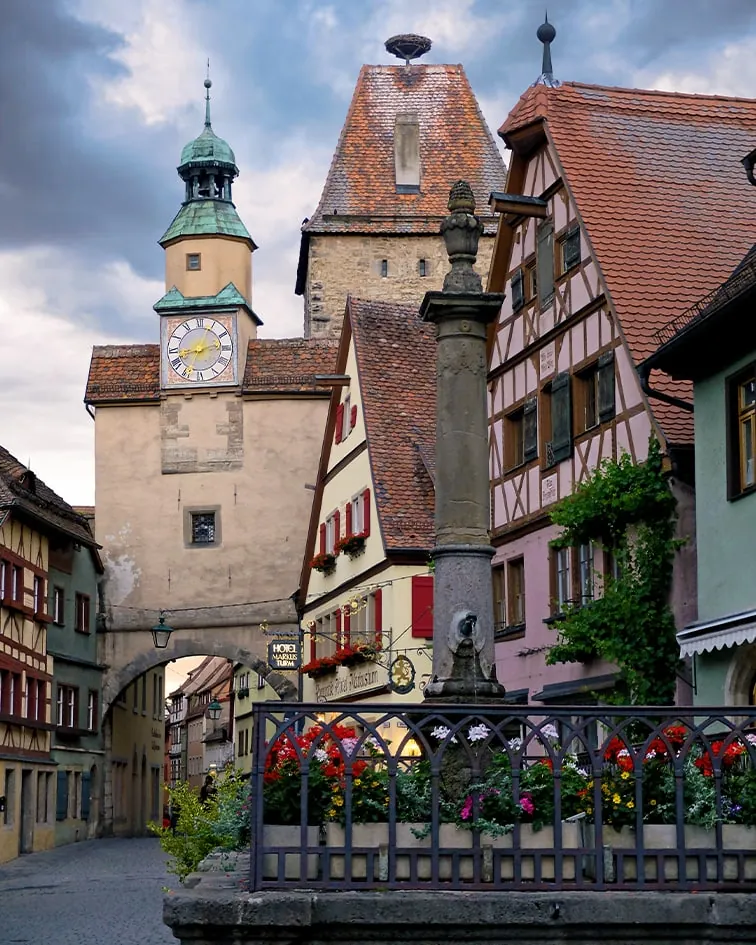
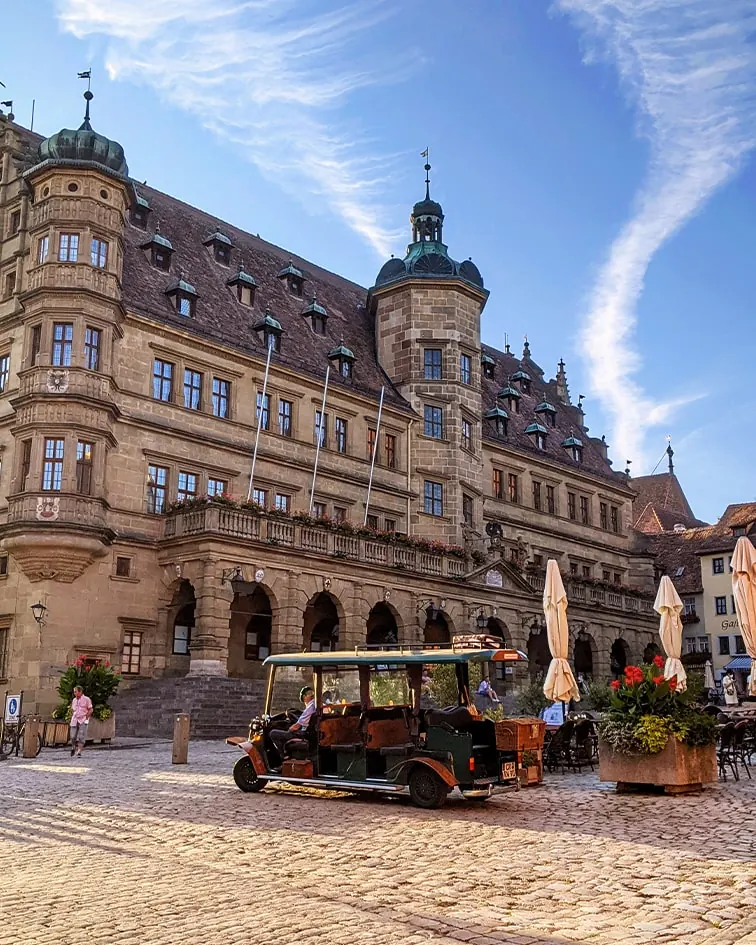
From the well-preserved city walls to the winding alleys, the castle garden, and magnificent half-timbered houses, Rothenburg ob der Tauber is a true treasure that keeps the rich history of Germany alive and preserved for future generations. Visitors can not only immerse themselves in the past but also experience the beauty and enchantment of one of the most beautiful cities in Germany. Rothenburg ob der Tauber will never cease to captivate people with its history and charm.
Colored facades, slanted gables, wooden beams, golden inscriptions, ornaments, and original carvings – not only do our whimsical half-timbered houses in Rothenburg ob der Tauber possess incredible charm. Get to know the most beautiful places and TOP sights of our enchanting city.
Hotel Gotisches Haus
Herrngasse 13
DE-91541 Rothenburg o.d.T.
hotel.gotischeshaus
You are currently viewing a placeholder content from Facebook. To access the actual content, click the button below. Please note that doing so will share data with third-party providers.
More InformationYou are currently viewing a placeholder content from Instagram. To access the actual content, click the button below. Please note that doing so will share data with third-party providers.
More InformationYou need to load content from reCAPTCHA to submit the form. Please note that doing so will share data with third-party providers.
More InformationYou are currently viewing a placeholder content from X. To access the actual content, click the button below. Please note that doing so will share data with third-party providers.
More Information